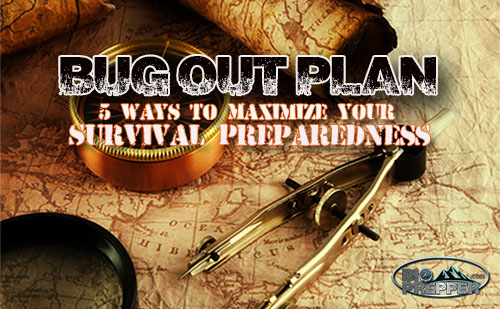When putting together a survival kit, everyone knows to include food, water and some kind of shelter. But besides waterproof matches, iodine tablets and a flashlight with spare batteries, what extras do you need?
Toiletries
Especially if you aren’t roughing it, you don’t want to look (or smell) like you are. Include toilet paper, pack a small kit with travel-size shampoo, lotion, sunscreen, soap and deodorant. Tuck in a toothbrush and toothpaste, as well as contacts and solution if you wear them, a comb and feminine products if you are a woman.
Hand-Crank radio
Great because you won’t need to pack extra batteries, a hand-crank radio is a necessary edition to your survival bag. It can provide information about world events or weather conditions if you are stranded or on the run.
Garbage Bags
Useful buggers, garbage bags can be torn to wear as a poncho or tied to keep things sanitary. Fold a few and keep them in your bag for whatever needs may arise.
Portable Power
A compact portable-power source is easy to include in your survival kit and handy for several reasons. You may need to make a life-saving call, or power your phone to access helpful apps. Some security systems allow users to view video feeds from their phone, including home alarm systems from Lifeshield.com. This could be useful if you need to see what’s going on at home before you go inside.
Whistle
Pack a whistle in case you need to signal for help. Most dollar stores carry them by the bagful.
Money
In some situations, greenbacks will get you absolutely nothing. But in others, cold hard cash will do the trick. Keep a wad of bills in your bag, but store them in separate pockets so you aren’t easily robbed.
Distractions
No matter the reason you are on the run, you will inevitably have some downtime. Whether it’s your turn at night-watch duty or you are stuck on floor at a bus station, you’ll need something to do. Pack a deck of cards or Rubik’s Cube to keep yourself from going insane.
First-aid Kit
If you don’t want to buy a pre-packaged one, make one yourself. Gather up a few bandages, sterilizing creams, latex gloves and pain killers. If you are on prescription medication, include a week’s worth of it in your bag. Instead of including scissors, slip in a multi-tool pocket knife.
Clothes
Depending on what type of emergency you are preparing for, pack clothes to fit the part. If you think you may be roughing it in the wilderness, pack sturdy shoes and a sweatshirt. If it’s a storm evacuation you are worried about, fresh underwear and socks will do.
Copies of Important Documents
Depending on the emergency, a copy of your passport, medical insurance, credit card information and photo identification can be helpful and while it may not be enough it can at least speed up the process.
Contact Information
Chances are you rely on your cell phone a little too much. Write down emergency contact information and other details you’d need if you couldn’t turn on your phone. Put them in a plastic baggy before including them in your survival bag.
Blanket
A small, foldable, emergency space blanket that can fit in your pocket cost about $3 at Walmart. They reflect and retain body heat and are waterproof, meaning you don’t need to pack a poncho.
Recent Photos
A few recent photos serve several purposes: not only will they be nice to look at if you are bored or lonely, but they could be used to identify you or whoever you are with in case something goes awry.
Source: doomsdaymoose.com
Other useful resources:
Survival MD (Best Post SHTF Medical Survival Guide Ever)
Blackout USA (EMP survival and preparedness guide)
Backyard Innovator (All Year Round Source Of Fresh Meat,Vegetables And Clean Drinking Water)
Conquering the coming collapse (Financial advice and preparedness )
Liberty Generator (Easy DIY to build your own off-grid free energy device)
Backyard Liberty (Easy and cheap DIY Aquaponic system to grow your organic and living food bank)
Bullet Proof Home (A Prepper’s Guide in Safeguarding a Home )
Family Self Defense (Best Self Defense Strategies For You And Your Family)
Sold Out After Crisis (Best 37 Items To Hoard For A Long Term Crisis)
Frank Wood
Frank encourages all homeowners to protect their investment and get a top-notch security system. He also shares other tips on how you can protect your home.






Leave a Reply